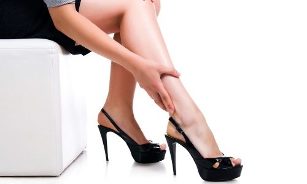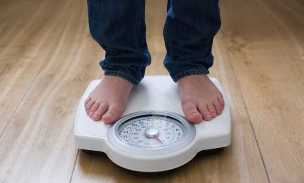Varicose veins of the lower extremities is a constant and irreversible elongation and extension of the affected veins. And if the first noticeable veins only cause psychological discomfort, over time the disease progresses and cause thrombophlebitis and venous ulcers. How not to lose the first signs of the disease?
Top varicose veins

Two circulation provides the body with oxygen and essential nutrients. Blood circulation provides the heart. Top-down-oxygenated blood moves more easily, thanks to the force of gravity.
When he reached the foot, the blood rose in the veins of the heart. In order to realize such a movement of the veins have valves. It is located opposite to each other the folds of the inner shells of the veins. Their mission is to repair the already raised portion of the blood until the next heartbeat.
The muscles of the legs under load will shrink and shrink, are also involved in the mechanism promoting blood. This happens in healthy people. What happened to the early stages of the disease varicose veins?
Prolonged sitting and standing in one place leads to stagnation of blood in the veins. The reason — the muscles don't contract, the venous pressure increases. Blood can't climb up through the veins. People prone to varicose veins, this situation does not cause pathological changes in the blood vessels as a function of the venous valves. Venous elastic wall to stretch when large amounts of blood and once again shrinking.
As soon as the valves no longer perform his job, started the phenomena of venous congestion. Increased venous pressure. Reduced number of muscle fibers, which maintain the wall in good condition. The lumen of the veins is growing rapidly, and the valves can fully close. Bigger than Vienna, more progress varicose veins in the phenomena.
The first important symptoms
In order to prevent varicose veins in the early stages, you should know the symptoms of the disease.
- Heaviness in the legs.
- Fatigue in the legs.
- Swelling.
- Cramps at night.
- Constantly cold feet.
- Dilated veins in the area tibia and popliteal Cup.
The most obvious symptom of varicose veins — a veins — may not be the first symptom. Tired legs, swelling and cramps will draw much faster. Especially if the disease has already met the other members of the family.
How to identify the pathology of veins in the early stages, if externally, the foot looks perfectly healthy?
Diagnostic methods
Effectively influence the pathological changes in the vessels of the lower limbs only in the early stages. Perfectly, up to clinical symptoms.
The difficulty of diagnosis is that the half of the patients do not feel the symptoms of the disease.
If your relatives, especially mothers, suffer from varicose veins, the annual examinations on the modern equipment will help to identify varicose veins in the early stages. Currently, the clinic can provide the following method:
- Ultrasound dopplerography.
- Venography.
- etc.
The decision about the need for such studies have been carried out by a doctor. Research can help evaluate the condition of the blood and lymphatic system, to identify the degree of disease development and to determine the appropriateness of surgical or conservative treatment.
The development stage of varicose veins in the legs
The disease develops over a long period of time. The first symptoms of clinical manifestations can last for a decade.
Step 1: Cosmetic violations

The initial stage of the disease is already present a little congestion, but the valves in the veins, which are still able to perform its tasks.
At the beginning of varicose veins is manifested in the form of spider veins, large veins and dry skin on the feet. You can change the nails become too thick or thin.
Interestingly, statistics show that most varicose veins develop in my left foot. Therefore, special attention should be paid to the left foot and the region of the popliteal fossa.
Step 2: Clinical symptoms
Venous mesh is manifested more clearly. Veins are noticeable, and form nodes. During this period, there is a feeling of heaviness in the legs, especially after prolonged standing.
Another unpleasant symptom is swelling. If the initial stage is accompanied by swelling only when wearing clothes with tight elastic bands (stockings, socks), then the feet swell just after a walk or sit at the computer.
These are all signs of varicose veins and oxygen starvation of the tissues. After all, stops at the extremities of venous, oxygen-depleted blood, which can provide normal tissue nutrition. The appearance of night cramps — extreme oxygen starvation.
If the initial stage of this pathology affects the valves in the veins, then in the second stage of the development of the disease they have already been shown to be ineffective.
Step 3: venous knots and spots, hyperpigmentation
It seems that the varicose veins in the third stage? If it starts varicose veins small spider veins, then the third stage is already a big venous knots. The veins are twisted braid. The skin over them hot to the touch and thin. Damage to such sites is accompanied by profuse bleeding. Still symptoms, such as pain and heaviness in the legs and swelling.
Stage 4: Complications
At this stage of varicose veins may develop complications.
- The appearance of venous ulcers.
- The rupture of varicose nodes.
- Thrombophlebitis.
They are all significantly impair the quality of life of the patient and require careful monitoring and rapid intervention.
Varicose veins can be cured by minimally invasive means only in the beginning stages. The more advanced the disease, the more difficult it is to survive without surgery.
How to stop the disease at an early stage
Varicose veins can start to occur any person. It is particularly important to monitor the condition of the feet of women, mothers and grandmothers, who suffer from varicose veins. There are several preventive measures and recommendations.
- Swimming and walking are beneficial to the blood vessels.
- All heat treatments — sauna, sauna, hot tub, Solarium leads to increased filling of the blood vessels and their overload.
- Shoes should have a low heel no more than 5 see.
- During the work should avoid long sitting and standing.
- Wearing compression underwear during pregnancy is an excellent means of prevention.
Truth and myths about the treatment of incipient varicose veins
The prevalence of the disease has led to speculation of unscrupulous pharmaceutical companies on this issue. Treatment of varicose veins has acquired a mass of myths about miraculous creams and pills, which will cure the problem permanently.
Myth 1. Pills can get rid of varicose veins

Actually, the fund can only reduce the clinical symptoms of the disease — edema, heaviness in legs and cramping. At the beginning of varicose veins, they do not stop. The process to add volume and length to the veins is irreversible.
Myth 2. Ointments and creams, helps with varicose veins
It is not so. Many ointments consist of menthol and its derivatives, which is a weak tonic effect. The use of can really promote blood circulation and remove stasis. However, varicose veins on the legs disappear, because creams can not change the situation broken valves and weak venous wall.
Myth 3. Treatment with leeches
In the early stages is completely useless. This treatment is based on the ability of special funds for the composition of the saliva of the leech that blood thinners.
However, even if you don't pay attention to the risk of bleeding ulcers and the risk of allergic reactions, the effect of such treatment is questionable.
Myth 4. A Compression garment does not cure varicose veins
Wearing compression underwear in some cases can act as a preventative measure. So, during pregnancy can protect the feet varicose veins, before beginning the first signs of the disease.
But it should be clear that these tights do not cure the disease, and effectively reduce its symptoms.
The truth is, that mechanical compression to compress the vein and the distribution of the blood flow of patients external deeper veins. So we eliminated the phenomena of venous congestion, which reduce the wind speed and the development of the disease and to remove the unpleasant symptoms.
Varices is the most common vascular disease that significantly affects quality of life. Approximately half of the patients do not notice symptoms of the disease, which greatly complicates the diagnosis and timely treatment. Watch out for your health, do not lose the beginning of the disease.













































